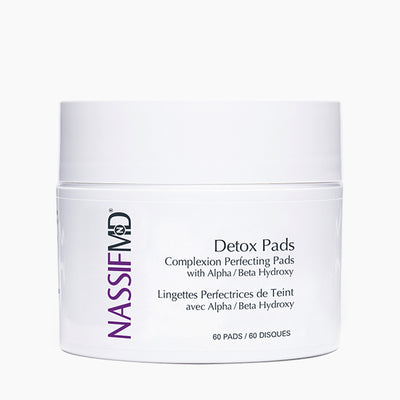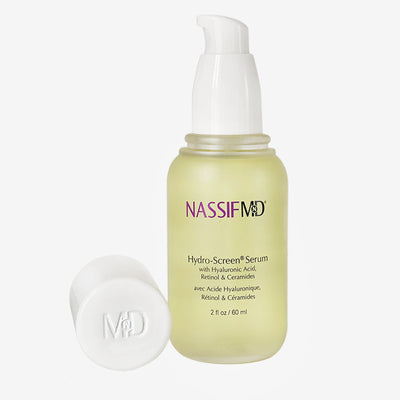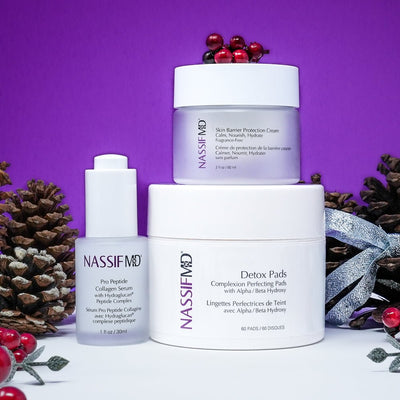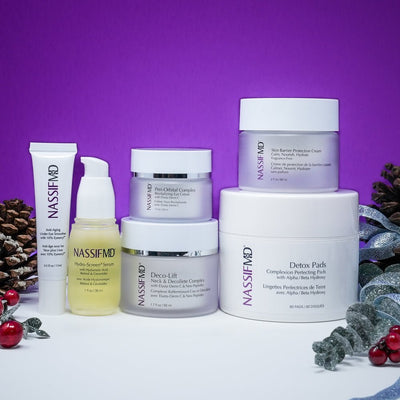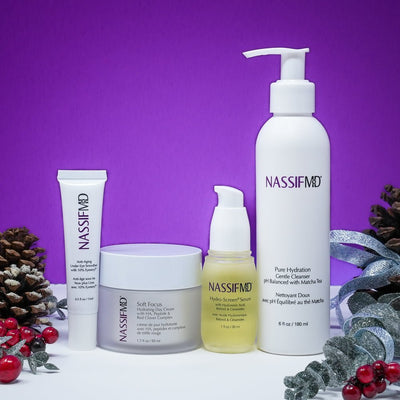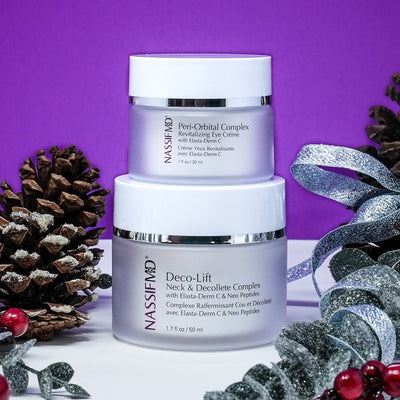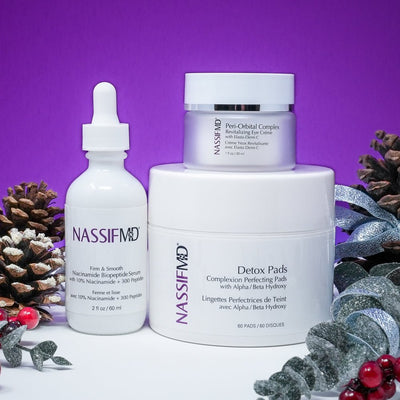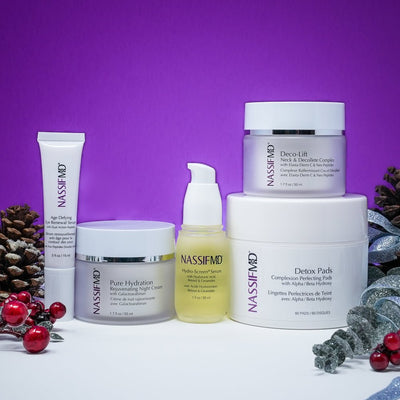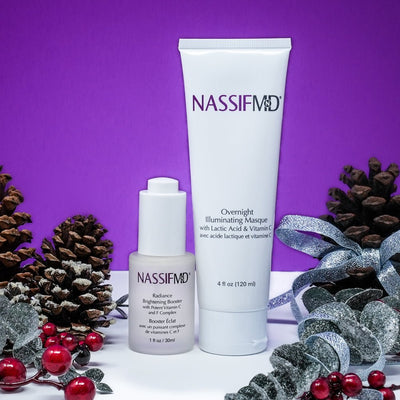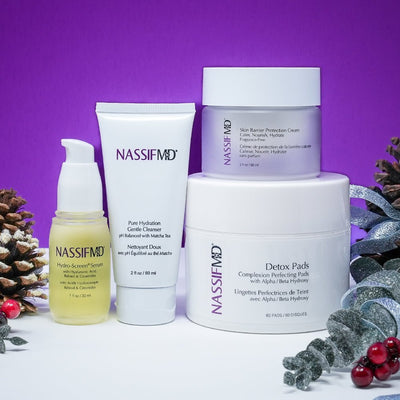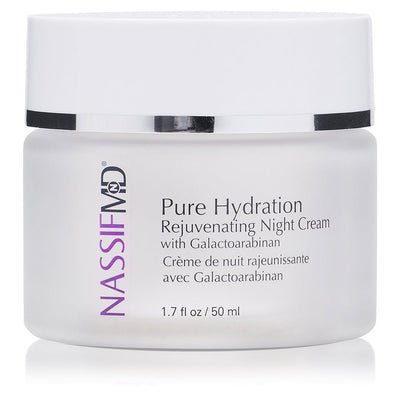Mandelic Acid: Benefits, Uses, and Skincare Tips
You may be familiar with glycolic, lactic, and phytic acids as exfoliating skincare ingredients, but mandelic acid is another option and is even more gentle on your skin. Mandelic acid is more than just an exfoliator; it has many benefits for skin health and promotes younger, brighter, nourished skin.
Today’s article will dive into mandelic acid and its benefits. Plus, we’ll cover facial plastic surgeon-approved tips. Keep reading to learn more about:
- What is mandelic acid?
- What does mandelic acid do?
- Mandelic acid benefits for your skin
- How to use mandelic acid
Let’s dive in!
What is Mandelic Acid?
Mandelic acid is a natural hydroxy acid derived from bitter almonds. It’s sometimes called “almond acid” for skin health and rejuvenation.
Alpha Hydroxy Acid (AHA)Mandelic acid is in the category of alpha hydroxy acids, along with lactic, phytic, and glycolic acid.
What is alpha hydroxy acid? Alpha hydroxy acids are naturally derived chemical exfoliators that remove dead skin cells and impurities while promoting cellular turnover to improve the health and appearance of the skin. Skincare with alpha hydroxy acids treats acne, aging, hyperpigmentation, and other skin concerns.
Mandelic acid is fat-soluble (instead of water-soluble) and a larger molecule than the other alpha hydroxy acids. These properties allow it to absorb slowly and penetrate deeply, which makes it less irritating and a good choice for all skin types, including sensitive skin.
If you’re curious about the difference between beta hydroxy and alpha hydroxy acid for skin, please read this article.
Mandelic Acid Benefits for Your Skin
The benefits of mandelic acid are similar to the other alpha hydroxy acids:
- Prevent breakouts and treat acne
- Provide gentle exfoliation without drying the skin
- Anti-aging effects for younger-looking, firmer skin
- Brightens and evens the skin tone
- Safe for sensitive skin
What set’s mandelic acid apart is how gentle it is, gentle enough for sensitive skin. Let’s look closer at these benefits next.
Acne Treatment and Breakout Prevention
Many factors contribute to acne, and mandelic acid can help manage several root causes with how the skin functions. As an exfoliator, mandelic acid helps remove dead skin cells (and other impurities) from the skin’s surface. It also helps unclog pores and reduce inflammation in the skin. Additionally, mandelic acid has antibacterial properties and can address bacterial imbalances that may contribute to acne.
Many people use mandelic acid in over-the-counter acne treatments and professional chemical peels targeted at acne treatment.
Gentle Exfoliation
As mentioned, the primary action of mandelic acid is to exfoliate the skin by removing impurities on the skin’s surface and promoting cellular turnover to reveal new skin cells below. Exfoliation improves the tone and texture of the skin, allowing the skin to be smoother, firmer, and more even while minimizing pore size.
Mandelic acid is a gentle chemical exfoliant and hydrates while it exfoliates. You’ll find it’s not as drying as some of the other alpha hydroxy acids.
Anti-Aging Effects
Chronological aging and aging from sun damage cause the skin to lose its structure and elasticity (from collagen loss). The result is dryer skin, more fine lines, wrinkles, and hyperpigmentation, like age spots.
Mandelic acid promotes collagen production and increases sebum (the skin’s natural oil) in aging skin. Because of these actions, mandelic acid can help counteract the visible signs of aging to smooth fine lines and promote firmer, brighter, more youthful skin.
Brightening and Evening Skin Tone
Exfoliating with mandelic acid can help address areas of hyperpigmentation where melanocytes (cells that produce melanin) overproduce the melanin pigment, causing dark spots, age spots, and dark circles.
Mandelic acid helps decrease the dark spots from acne scars and age spots, but it doesn’t harm melanocytes like some harsh chemicals can. This gentleness makes melanic acid a good choice for all complexions, including darker skin.
Safe for Sensitive Skin
Melanic acid is gentle on the skin because it’s a larger molecule than other alpha hydroxy acids and produces less irritation. If you have sensitive skin and are considering mandelic acid vs. glycolic acid or mandelic acid vs. salicylic acid (a beta hydroxy acid), mandelic acid is the better choice.
Popular Uses for Mandelic Acid
Mandelic acid treatments are popular for various skin concerns, including uneven texture, hyperpigmentation, signs of aging, and acne. Mandelic acid can also help prevent future skin concerns.
Daily Skincare – Cleansers, Serums, Toners
Mandelic acid may be an ingredient in the following types of alpha hydroxy acid products:
- Mandelic acid serum
- Mandelic serum
- Mandelic acid peel
- Mandelic acid toner
- Mandelic acid body wash
- Mandelic acid cleanser
- Mandelic acid face wash
Professional Mandelic Acid Peels
In addition to at-home products, mandelic acid is an active ingredient in professional chemical peels available from your dermatologist or medical spas. However, not everyone can access these professional services, so Dr. Nassif developed NassifMD® Even, Correct & Renew Retexturizing Treatment Pads for professional mandelic acid peel benefits at home.
Targeted Skin Treatment
NassifMD® Even, Correct & Renew Retexturizing Treatment Pads are a targeted treatment using mandelic acid for skin rejuvenation. They address rough skin texture and aging skin with just a few swipes. Active ingredients include mandelic acid, niacinamide, hyaluronic acid, and retinol. Mandelic acid pulls the other ingredients deep into the skin to supercharge the synergistic benefits for brighter, smoother, and more even skin.
Mandelic Acid Tips
Mandelic acid is generally safe and well-tolerated, even for those with acne-prone, aging, or sensitive skin. However, you don’t want to over-exfoliate. Let’s review the best mandelic acid tips from Dr. Nassif himself.
How To Use with Other Skin Products
Enjoy NassifMD® Even, Correct & Renew Retexturizing Treatment Pads along with the rest of your evening skincare routine. There aren’t any interactions between mandelic acid and other active ingredients. In fact, mandelic acid may enhance the benefits you receive from other NassifMD® facial plastic surgeon skincare.
When using NassifMD® Even, Correct & Renew Retexturizing Treatment Pads, be sure to moisturize after use. The NassifMD® Hydro-Screen Serum and Skin Barrier Balm combination works well for evening use.
Then, wear sunscreen every day. As mandelic acid promotes cellular turnover, it can leave your skin more sensitive to sun damage, and SPF protection is essential.
Application Frequency
Customers often ask how often to use mandelic acid. While the guidelines may vary individually, products with mandelic acid don’t require daily use.
Dr. Nassif recommends using NassifMD® Even, Correct & Renew Retexturizing Treatment Pads twice weekly in the evening. Use on the face (avoiding the eyes), neck, and décolleté without rinsing.
When you first use the pads, it’s normal to experience some skin flaking following use. The flaking is the removal of dead skin to reveal the younger skin underneath. As mentioned above, moisturize after use, and don’t skip the sunscreen.
Mandelic acid offers gentle exfoliation without drying the skin and is perfect for all skin types, including sensitive, dry, and aging skin. And a little bit goes a long way! Exfoliating just twice per week with NassifMD® Even, Correct & Renew Retexturizing Pads can completely renew and revitalize your appearance. Give it a try!
References
- Dayal, S., Kalra, K. D., & Sahu, P. (2020). Comparative study of efficacy and safety of 45% mandelic acid versus 30% salicylic acid peels in mild-to-moderate acne vulgaris.Journal of cosmetic dermatology, 19(2), 393–399.
- Wójcik, A., Kubiak, M., & Rotsztejn, H. (2013). Influence of azelaic and mandelic acid peels on sebum secretion in ageing women.Postepy dermatologii i alergologii, 30(3), 140–145.


